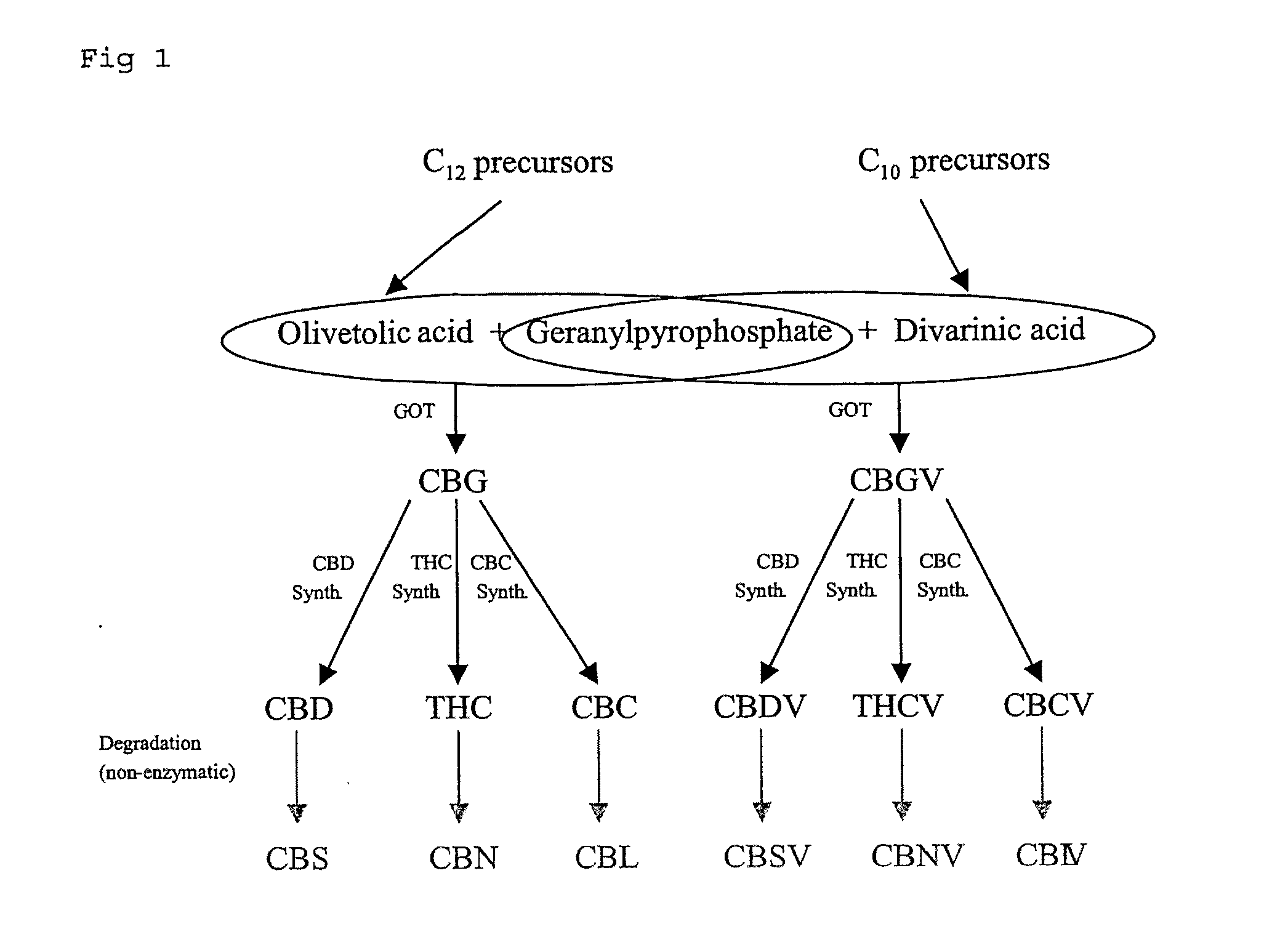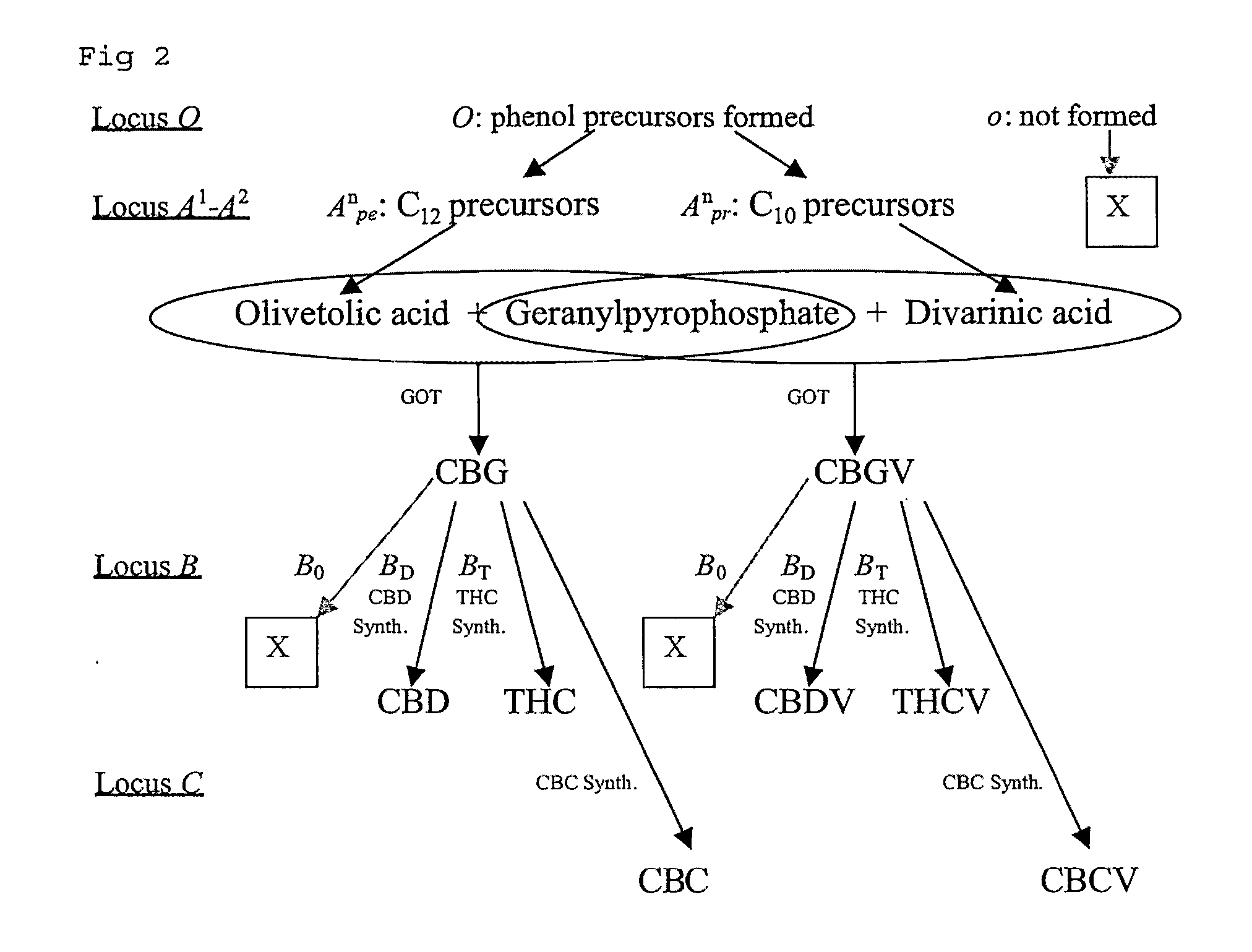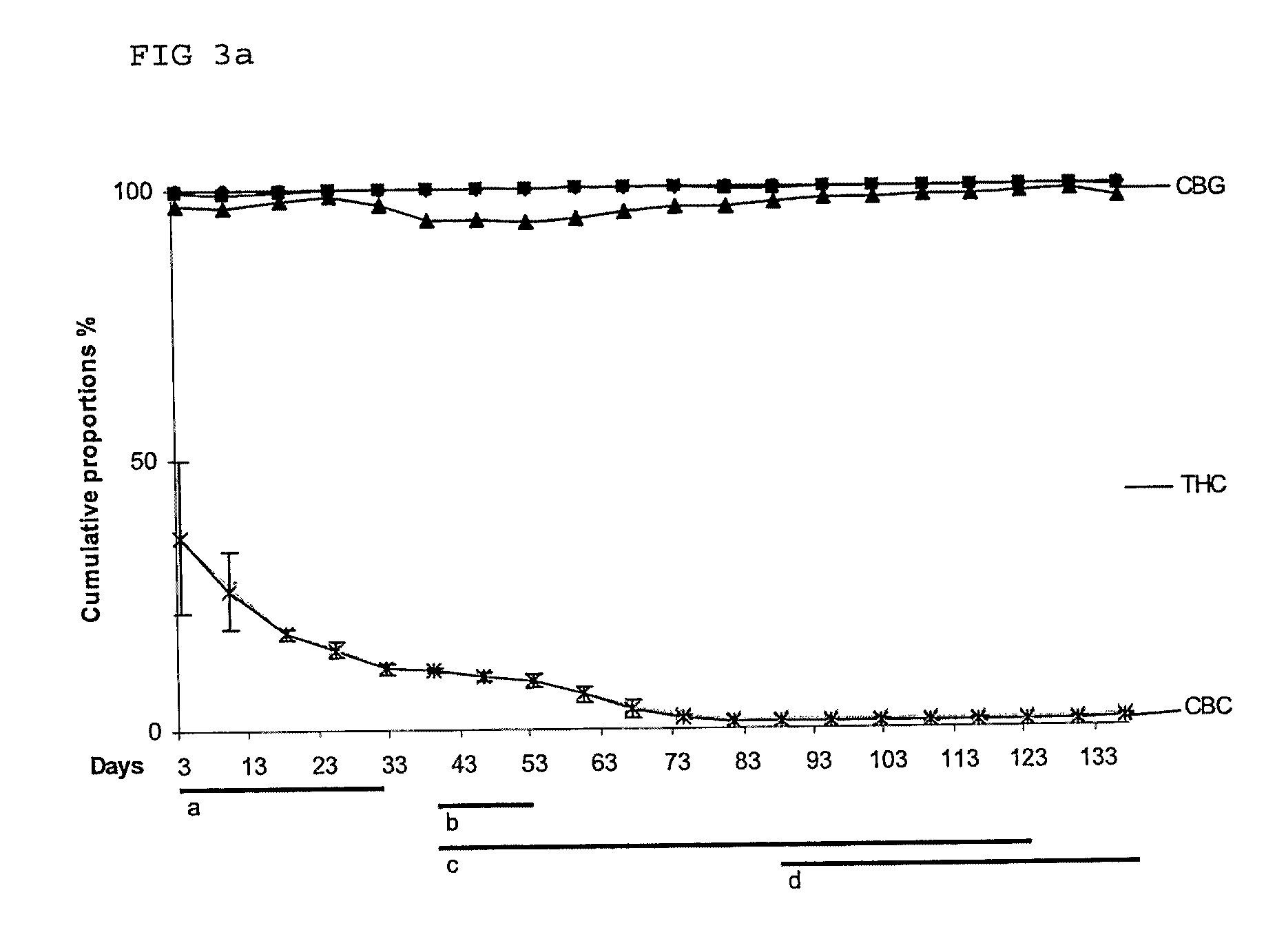Cannabis sativa plants rich in cannabichromene and its acid, extracts thereof and methods of obtaining extracts therefrom
a technology of cannabichromene and its acid, applied in the field of cannabis sativa chemotypes, can solve the problems of not being able to approach the development of high cbc containing plants in an obvious manner, and plants reaching substantial cbc proportions at maturity are uncommon
- Summary
- Abstract
- Description
- Claims
- Application Information
AI Technical Summary
Benefits of technology
Problems solved by technology
Method used
Image
Examples
example 1
Chemotype Monitoring Experiment
1.1 Materials and Methods
[0129]Table 1 presents five female inbred lines that were grown for periodic assessments of their cannabinoid contents. Up to five seedlings per line were evaluated under similar glasshouse conditions.
[0130]Plants were kept under permanent light for the first two weeks after emergence. Then, to induce flowering, the 24 h photoperiod was dropped to 19 h and further gradually reduced by 15 minutes per day. When the photoperiod reached the level of 11 h, it was kept constant until the end of the experiment. The onset of flowering was visible in all plants by the day the 11 h photoperiod was reached. Commencing shortly after seedling emergence, at weekly intervals, and always around mid-day, samples were taken from the most recently developed tissues. These were, in order:[0131](a) The last expanded apical stem leaves;[0132](b) The last expanded inflorescence leaves;[0133](c) Bracteoles, bracts and leaves from inflorescences with w...
example 2
Breeding Experiments
2.1 Method
[0148]The CBC rich breeding progenitors selected for the experiments were:[0149]A female clone RJ97.11 obtained from HortaPharm B.V., Amsterdam, The Netherlands; and[0150]A Korean fibre landrace 2000.577, from the Cannabis collection at. Plant Research International (formerly CPRO), Wageningen, The Netherlands,
[0151]From the later two female seedlings are identified by the suffix:[0152]0.118; and[0153]0.121.
[0154]All progenies were produced from female parents only. In order to self-fertilise or mutually cross female plants, a partial masculinisation was chemically induced. Isolating plants in paper bags throughout the generative stage ensured the self-fertilisations.
[0155]The distribution of chemotypes in segregating progenies was determined and X2 values were calculated to test the conformity of observed segregation ratios to those expected on the basis of hypothesised models. Three sets of breeding experiments were performed:[0156]2.1.1 Direct inbree...
example 3
CBC(A) Content and Vegetative State
3.1 Methodology
[0186]In order to determine whether a certain presence of CBC is a universal, albeit transitory, characteristic of Cannabis, early stem leaves from 178 vegetative cuttings from a variety of source populations, were analysed for cannabinoid content.
3.2 Results
[0187]The early vegetative leaves from all accessions contained CBC. It was the major cannabinoid in 4.5% of the samples and the second in 78%.
PUM
 Login to View More
Login to View More Abstract
Description
Claims
Application Information
 Login to View More
Login to View More - R&D
- Intellectual Property
- Life Sciences
- Materials
- Tech Scout
- Unparalleled Data Quality
- Higher Quality Content
- 60% Fewer Hallucinations
Browse by: Latest US Patents, China's latest patents, Technical Efficacy Thesaurus, Application Domain, Technology Topic, Popular Technical Reports.
© 2025 PatSnap. All rights reserved.Legal|Privacy policy|Modern Slavery Act Transparency Statement|Sitemap|About US| Contact US: help@patsnap.com



